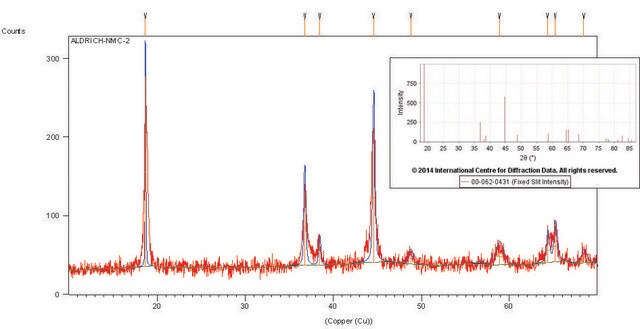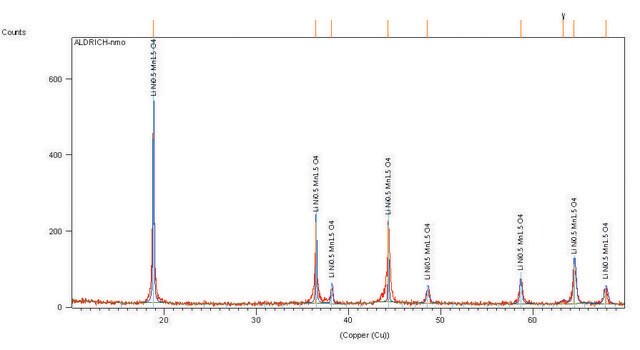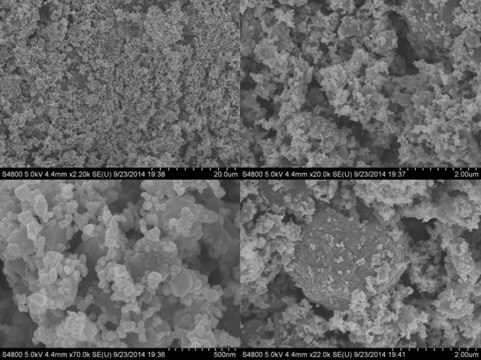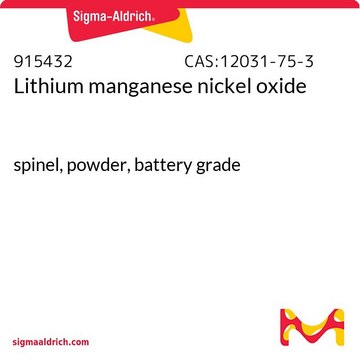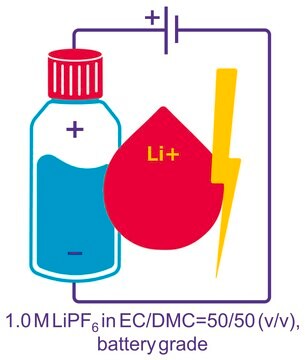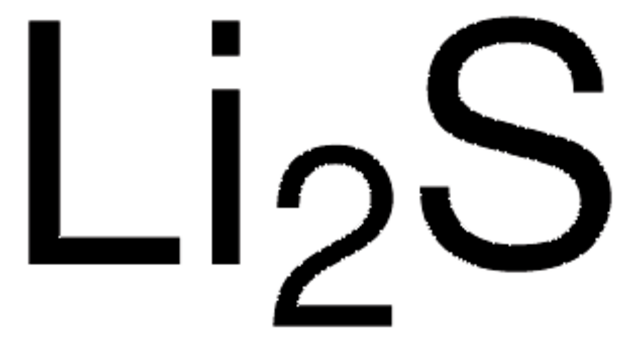765163
Lithium nickel manganese cobalt oxide
electrode sheet, aluminum substrate, size 5 in. × 10 in.
Synonyme(s) :
NMC
About This Item
Produits recommandés
Qualité
battery grade
Niveau de qualité
Description
Nominal Voltage: 3.5 V, Li/Li+
Composition
loading, ≥80%
Caractéristiques du produit alternatif plus écologique
Design for Energy Efficiency
Learn more about the Principles of Green Chemistry.
sustainability
Greener Alternative Product
Ampleur du marquage
≥80% loading
Taille
5 in. × 10 in.
Épaisseur
16 μm
Taille des particules
8-12 μm (typical)
Capacité
150 mAh/g(minimum)
Pf
>1000 °C
Application(s)
battery manufacturing
Autre catégorie plus écologique
Description générale
Application
Autres remarques
Operating Conditions:
- Recommended maximum charge voltage: 4.4 V vs Li/Li+
- Recommended maximum charge current: 1C
- Recommended cut-off voltage for discharge: 2.7 V vs Li/Li+
- Recommended maximum discharge current: 1 C
- Recommended charge method: constant current - constant voltage
Mention d'avertissement
Warning
Mentions de danger
Conseils de prudence
Classification des risques
Carc. 2 - Skin Sens. 1
Code de la classe de stockage
13 - Non Combustible Solids
Classe de danger pour l'eau (WGK)
WGK 3
Point d'éclair (°F)
Not applicable
Point d'éclair (°C)
Not applicable
Faites votre choix parmi les versions les plus récentes :
Certificats d'analyse (COA)
Vous ne trouvez pas la bonne version ?
Si vous avez besoin d'une version particulière, vous pouvez rechercher un certificat spécifique par le numéro de lot.
Déjà en possession de ce produit ?
Retrouvez la documentation relative aux produits que vous avez récemment achetés dans la Bibliothèque de documents.
Les clients ont également consulté
Articles
Professor Qiao’s laboratory lays out recent advances in conversion type lithium metal fluoride batteries. This review explores key concepts in developing electrochemically stable microstructures for wide Li-ion insertion channels.
Electrode Materials for Lithium Ion Batteries
Li-ion batteries are currently the focus of numerous research efforts with applications designed to reduce carbon-based emissions and improve energy storage capabilities.
The critical technical challenges associated with the commercialization of electric vehicle batteries include cost, performance, abuse tolerance, and lifespan.
Notre équipe de scientifiques dispose d'une expérience dans tous les secteurs de la recherche, notamment en sciences de la vie, science des matériaux, synthèse chimique, chromatographie, analyse et dans de nombreux autres domaines..
Contacter notre Service technique